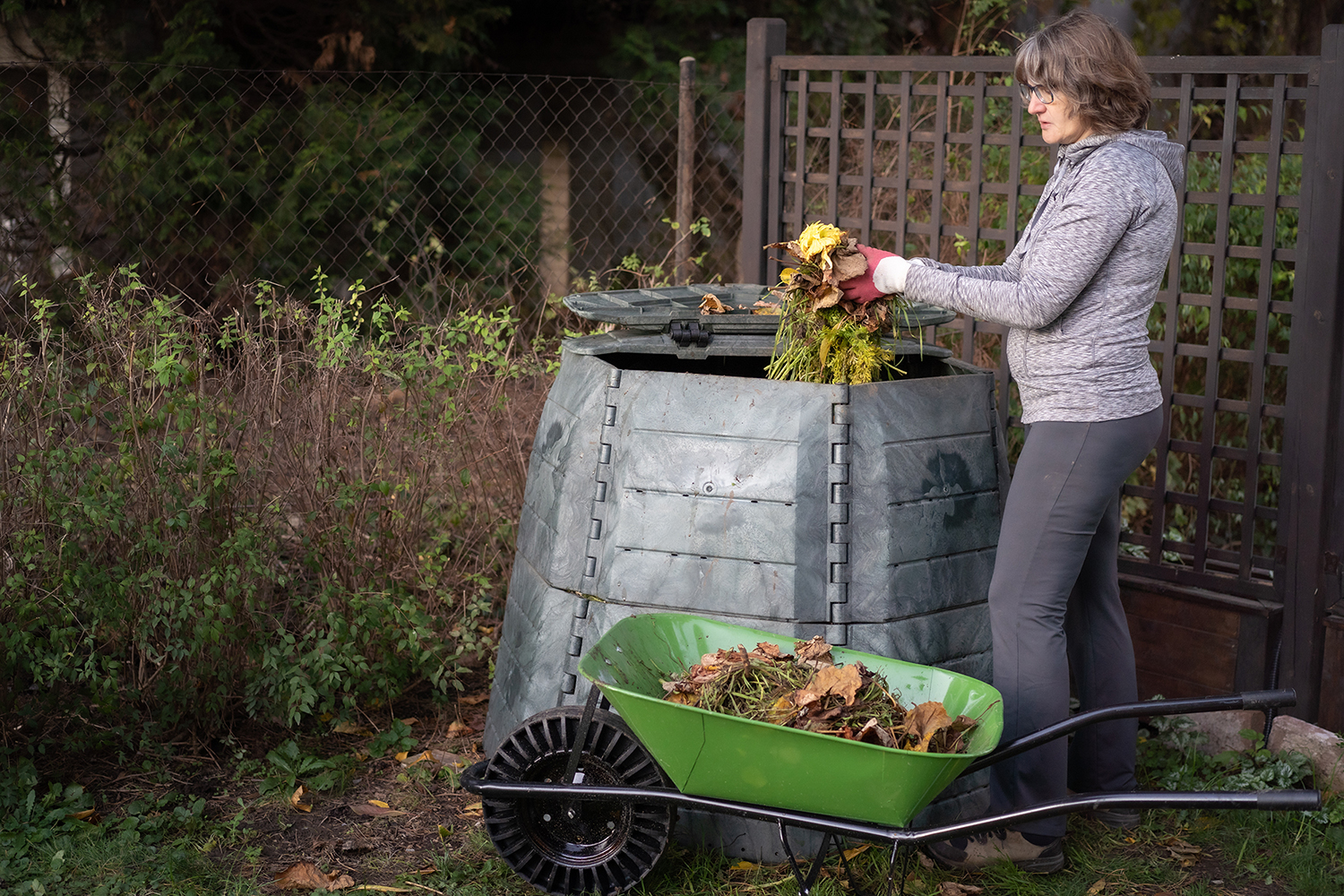In our household, taking the compost out has become the job the kids have to do when they’re misbehaving.
You hit your sister – ‘right, that’s it! Take out the compost’.
Not listening to mum when I’ve asked a hundred times not to roller skate through the house – ‘here’s the bin’.
For some reason, my girls find it the most disgusting job (especially when the bucket tips out while they’re running to the bin).
Hopefully we haven’t put them off for life, but at least they’re gaining an understanding of reduce, reuse, recycle.
The composting process is nature’s way of recycling organic matter and creating a nutrient rich environment for new things to grow.
It is the best (and cheapest) way of supplementing your garden soil; adding nutrients and beneficial organisms, aerating the soil and warding off plant disease. As well as offering an alternative to putting chemical fertilisers in your garden.
You can also feel good knowing that you’re helping to reduce landfill.
Organic matter makes up more than half of all landfill and is particularly detrimental in that environment as it releases harmful methane gases.
When put into your home compost bin, however, it can be turned into a resource for growing nourishing food.
Starting your own compost is a rewarding and pretty simple process.
All you need to get started is the bin itself, which you can either make yourself from materials such as untreated wood or bamboo, or if you’re not into DIY you can buy one.
A basic bin will be fine for beginners and can be purchased for under $100.

How do I know when my compost is ready?
It will be dark brown/almost black, and sweet and earthy smelling.
How quickly your compost will be ready to use will depend on factors such as the internal temperature of the bin and the health of the microorganisms contained within it.
Compostable plastics
There is still some confusion around compostable plastics and whether they really do break down in a compost bin.
Firstly, there are two types of these plastics: ‘home compostable’ and ‘commercially compostable’.
The latter cannot be put into your home compost as it will likely require temperatures of 70 degrees celsius to break down, so make sure you’re putting the right sort into your home compost bin.
In my experience home compostable plastics don’t seem to break down quite as quickly as the rest of the contents, I’d recommend chopping the plastic into smaller pieces to speed up the process.
What can’t be composted?
Meat or bones, diseased plant material, animal (carnivore) or human waste, plastic, metal, treated wood.
What can I put into my compost bin?
Seaweed, light prunings, ash (from un-tanalised timber), paper and cardboard (preferably shredded), old leaves and plant material, straw or hay, some weeds – best to avoid especially vigorous varieties that have gone to seed, lawn clippings, animal (herbivore) manure, kitchen waste, coffee grounds, eggshells, fresh plant material.

Recipe for a healthy compost:
Air – Your bin needs to have ventilation. Gaps in the sides will allow for airflow; oxygen is essential for decomposition. Turning your compost will also keep it aerated.
Warmth – Heat activates compost so position your bin in a hot, sunny spot.
Moisture – Keep a lid on your compost bin, especially in the cooler months when there’s more rainfall, to stop it getting oversaturated. In the warmer months you may need to water occasionally to keep it from drying out. The ideal consistency should be that of a damp sponge.
Layers – Think of your compost as a lasagne, consisting of green and brown matter, and an occasional sprinkling of additives such as lime and soil. The green and brown layers should be roughly 10cm thick. Green matter is fresh organic matter such as kitchen waste, seaweed, or lawn clippings. Brown matter includes cardboard, dead leaves, ash, or wood chips.
The right pH – Ideally your compost bin should have a pH about 6 or 7. Many compost bins become too acidic – a handful of lime every now and then will help to balance it. Ensuring you have similar amounts of green and brown waste will also keep the acidity levels balanced. Fruit flies are a sure sign that your compost has become too acidic.
Microorganisms – Microorganisms and earthworms will enter the compost bin when it has contact with the ground. This is a good thing! Adding a thin layer of soil to your compost every so often will encourage more activity.







